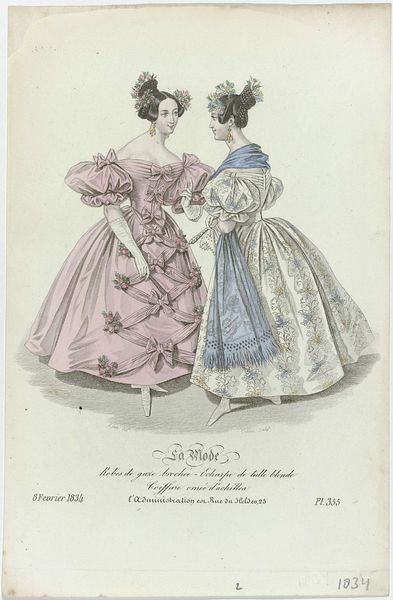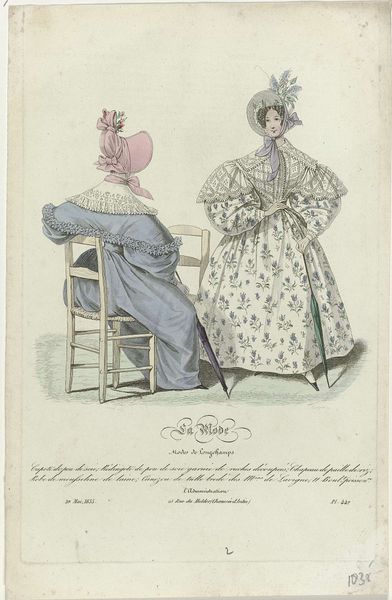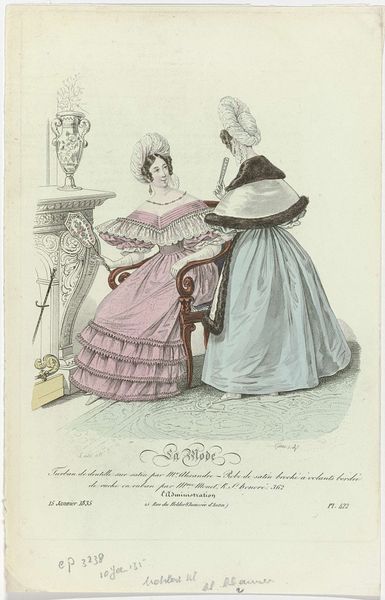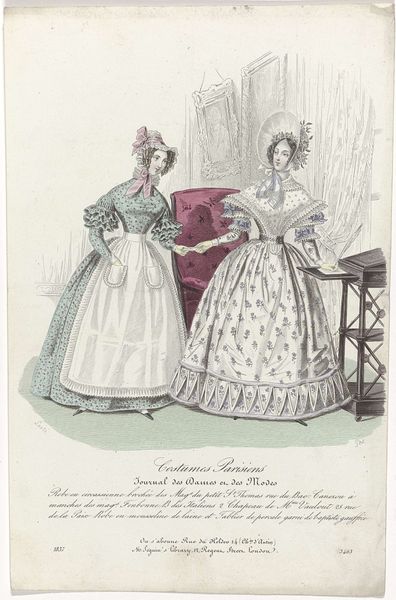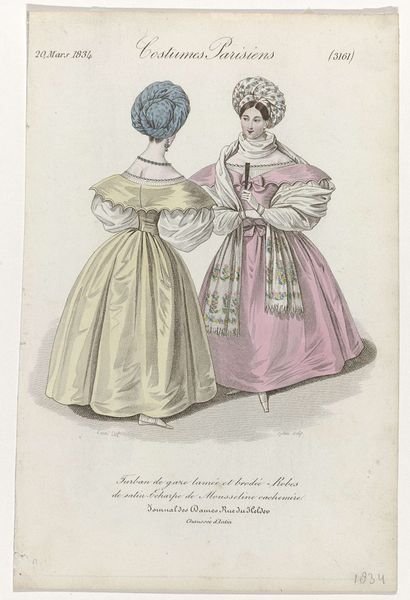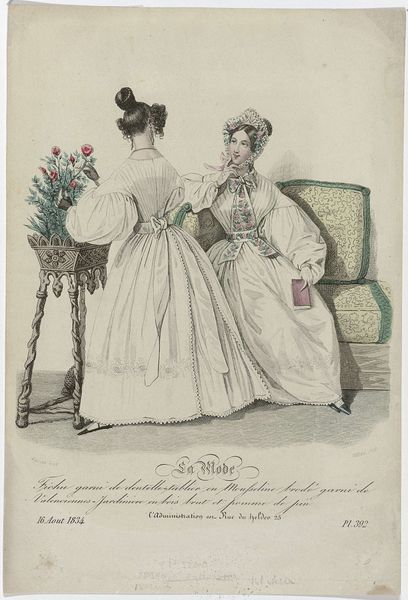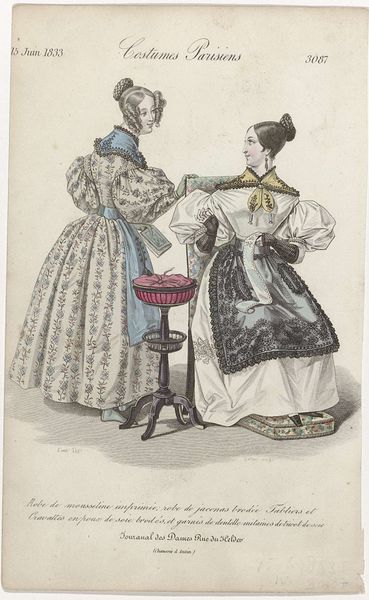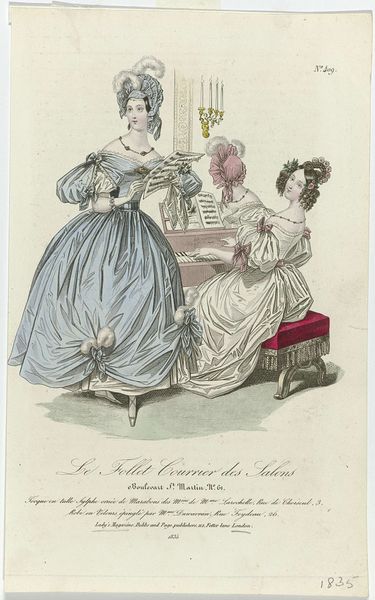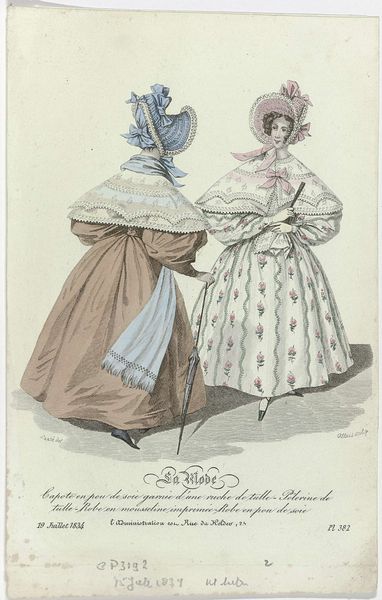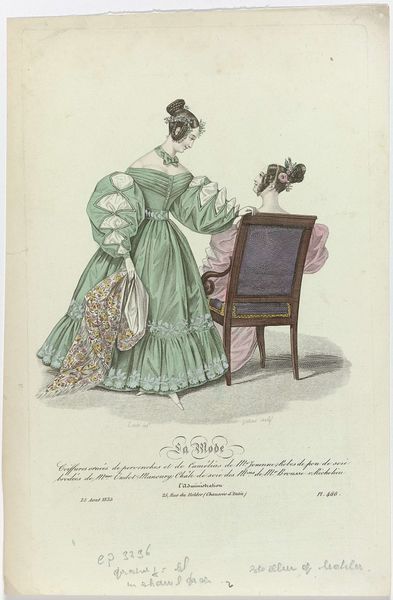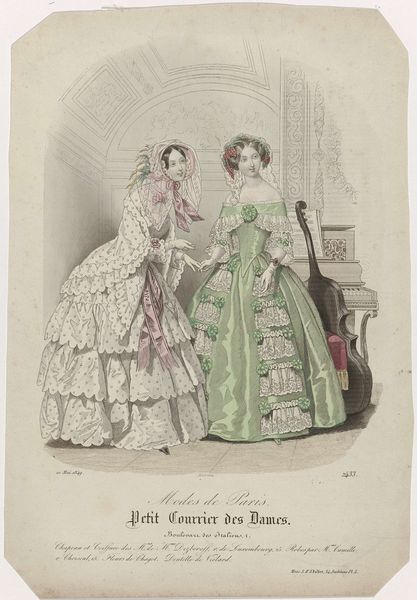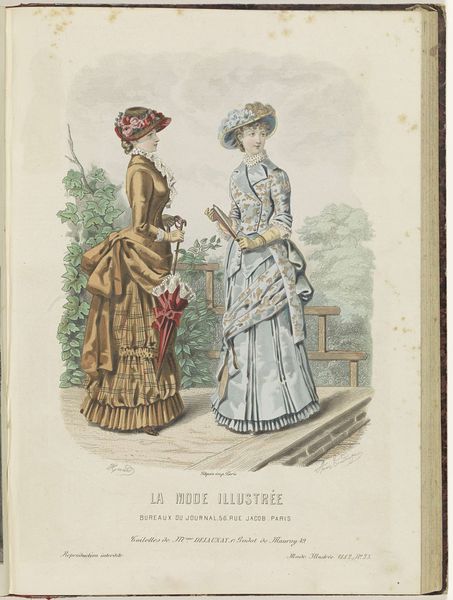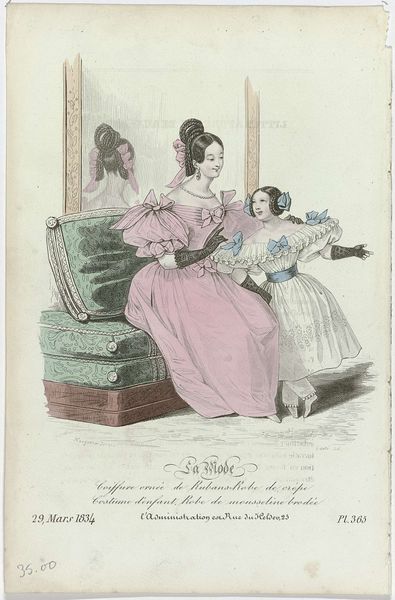
drawing, watercolor
#
portrait
#
drawing
#
watercolor
#
romanticism
#
watercolour illustration
#
genre-painting
#
dress
Dimensions: height 229 mm, width 143 mm
Copyright: Rijks Museum: Open Domain
Curator: Look at this delicate watercolor illustration. "La Mode, 29 juin 1833," by Georges Jacques Gatine, showcases the fashion of the time. Editor: My first impression is one of constraint. Despite the ornate fabrics and puffed sleeves, there's a rigidity to the figures, a sense of being corseted, not just physically but socially. Curator: Precisely. Gatine's illustration exists as more than just a fashion plate. It mirrors the socio-political climate of the era. The emphasis on dress reflects the limited avenues available to women for expressing individuality and status. Fashion became a significant mode of communication and negotiation within patriarchal structures. Editor: The indigo dye in the floral pattern on the left figure's dress, and repeated again in the right figure's apron—the same color as royal robes—draws the eye, acting almost as an emblem. Note the accessories, the elaborate coiffures—all symbols within a visual vocabulary signaling status and, perhaps, aspirations. Is Gatine pointing to social climbing, even subtly critiquing it? Curator: Absolutely, the iconography suggests a layered reading. For example, that sewing table. It is not just for domestic craft, it becomes emblematic of women's "proper" place. This domestic setting contrasted against the ostentatious displays of wealth and material points to a subtle tension between expectation and aspiration in early 19th century France. Editor: And there's something almost dreamlike about the rendering. These figures don't feel quite real; they seem constructed, like paper dolls in an elaborate theater. It highlights the performative aspect of fashion itself. And in the bottom right corner, notice the marking 'PL310' alongside the inscription; '29 juin 1833' as another kind of symbol. They seem to emphasize an objective historic record; however, can this sort of thing truly reflect a complete cultural context? Curator: That element reinforces the commercial intent behind the image's existence – this isn't simply a portrait. Ultimately, it's a marketing tool designed to circulate among elite social spheres. But the choice of watercolor, and drawing mediums, as you note, lifts the visual and its resonance, it does begin to speak as a document, despite the advertisement purpose. Editor: Yes. So we have in Gatine's watercolor both the construction of identity and an unveiling of that construction, revealing its dependence on material symbols and societal pressures. It seems that at its core, its focus is on commerce. Curator: I see it too, perhaps more as an argument or social critique embedded within a system it seems complicit with. Editor: Agreed; what a fascinating conversation it has sparked.
Comments
No comments
Be the first to comment and join the conversation on the ultimate creative platform.
